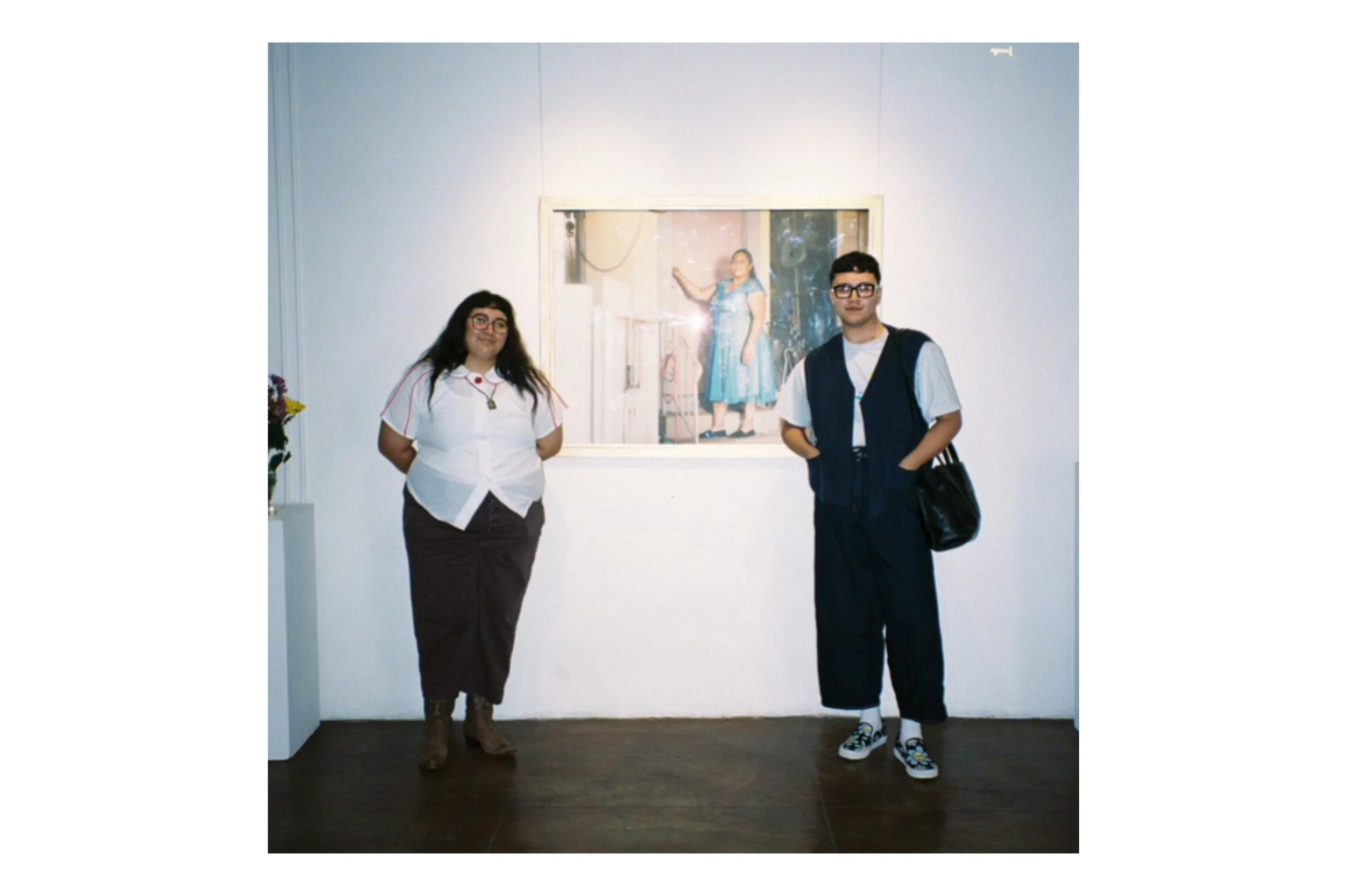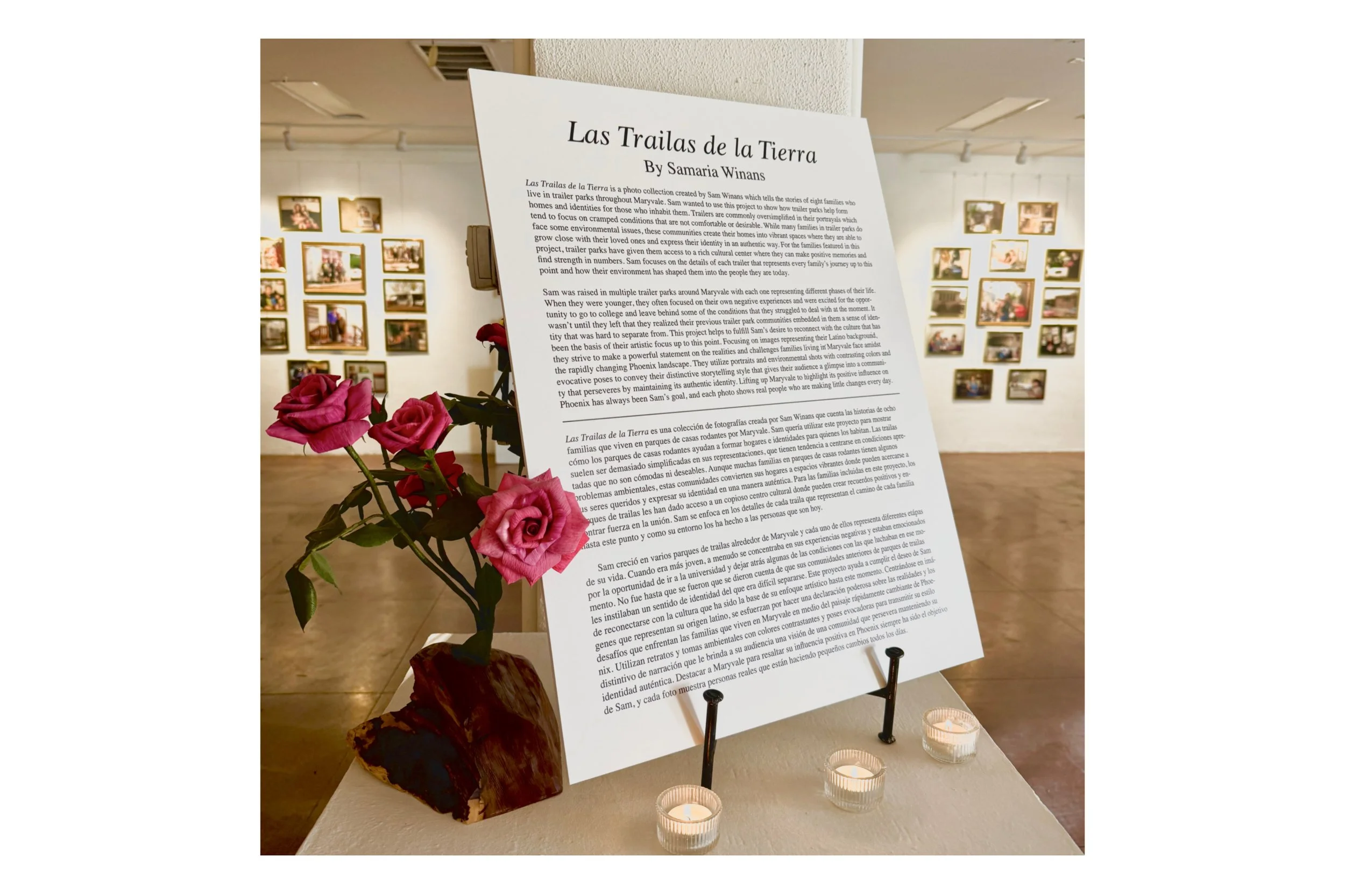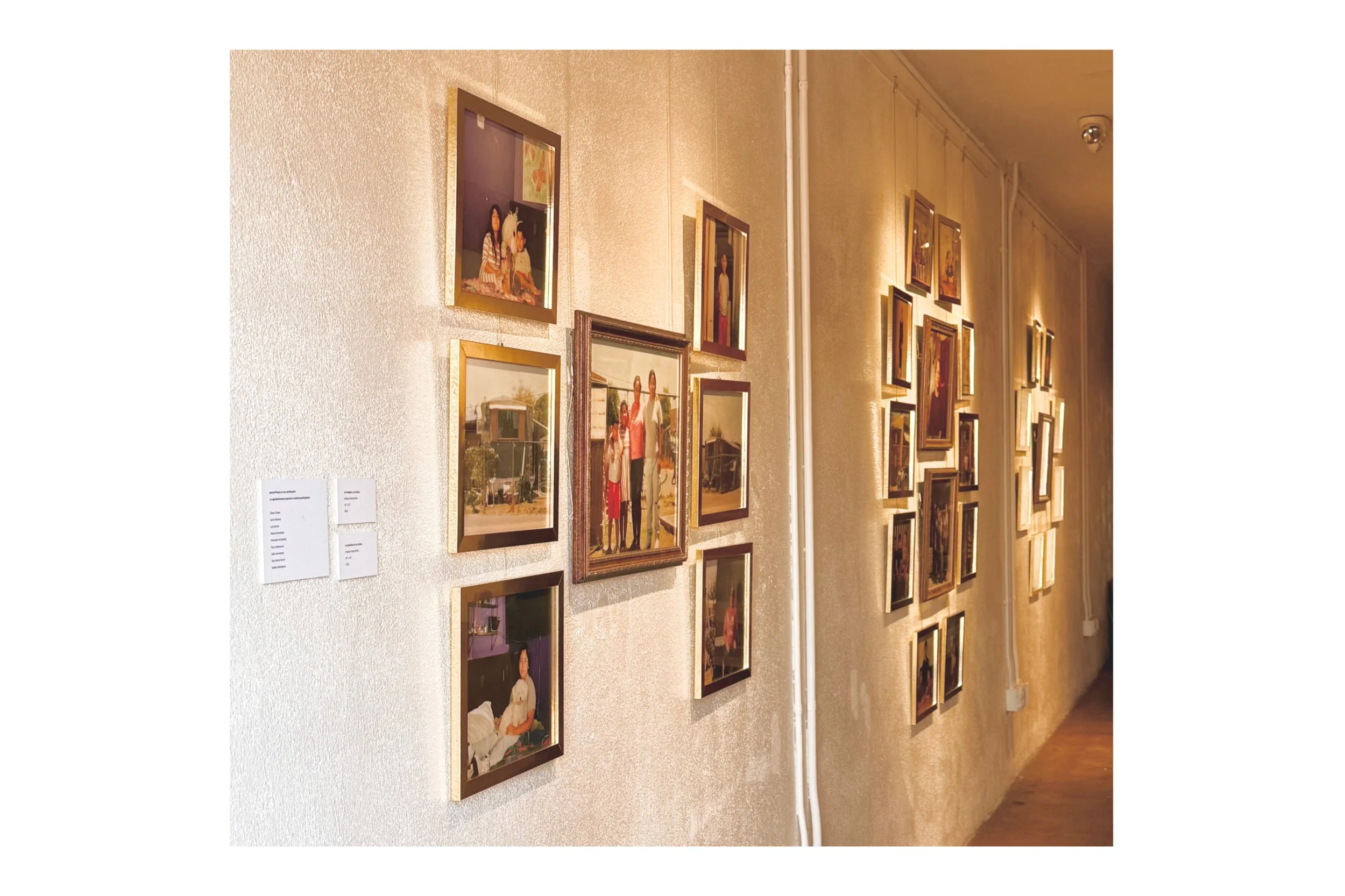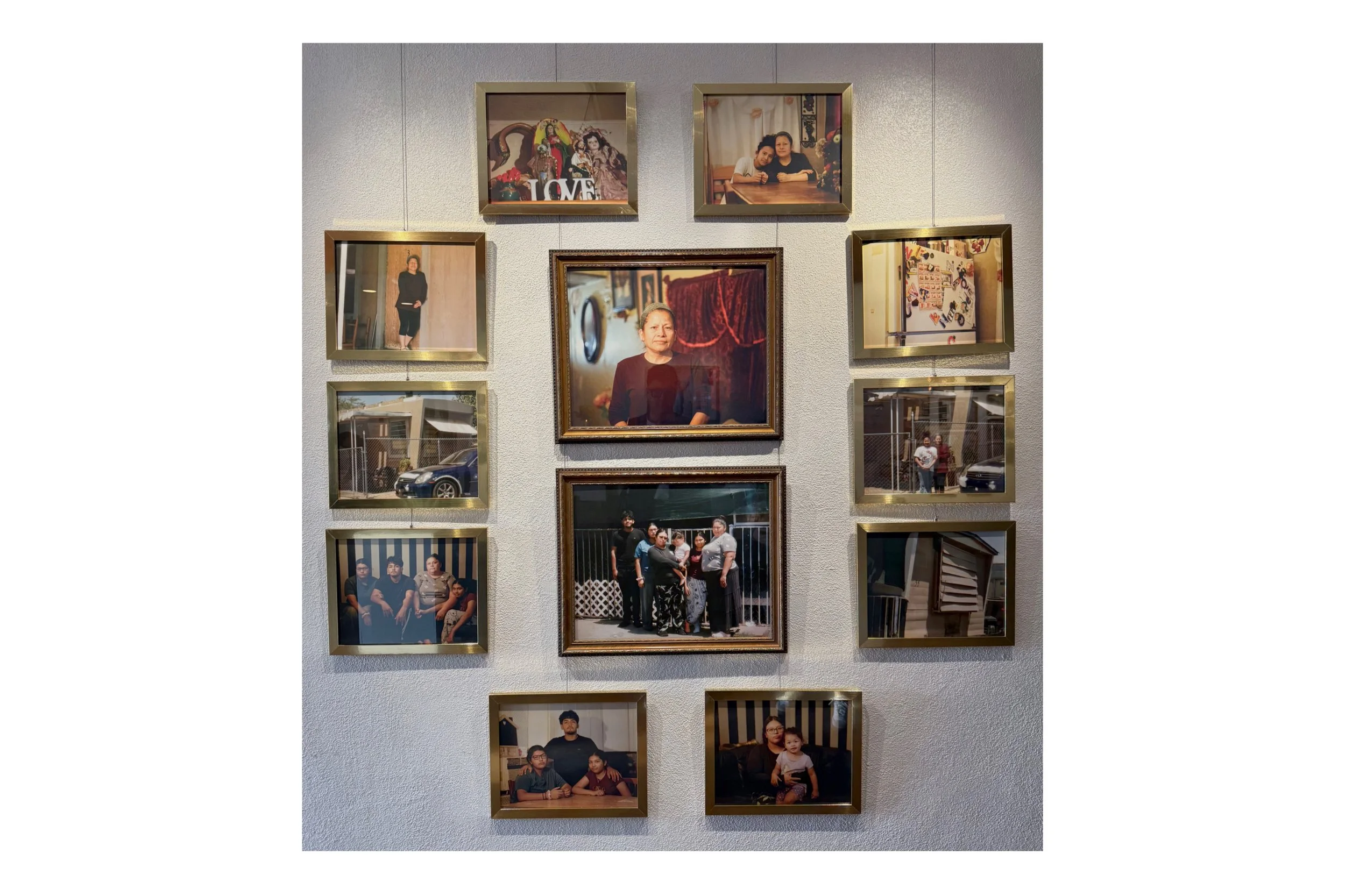In Conversation With : Exhibition Review II
BrassTuna’s “IN CONVERSATION WITH: Exhibition Review” IS A CONVERSATIONAL INTERVIEW SERIES WHERE WE SIT DOWN WITH CONTEMPORARY ARTISTS AND DISCUSS their current or upcoming solo exhibitions.
(All conversations are recorded, and transcribed by BrassTuna.)
This conversation has been edited for length and clarity
Samaria Winans - Las Trailas de la Tierra
(January 4th - January 31st, 2025)
“Las Trailas de la Tierra is a photo collection created by Sam Winans which tells the stories of eight families who live in trailer parks throughout Maryvale. Sam wanted to use this project to show how trailer parks help form homes and identities for those who inhabit them. Trailers are commonly oversimplified in their portrayals which tend to focus on cramped conditions that are not comfortable or desirable. While many families in trailer parks do face some environmental issues, these communities create their homes into vibrant spaces where they are able to grow close with their loved ones and express their identity in an authentic way. For the families featured in this project, trailer parks have given them access to a rich cultural center where they can make positive memories and find strength in numbers. Sam focuses on the details of each trailer that represents every family's joumey up to this point and how their environment has shaped them into the people they are today.”
(Text provided by @bauhausbashas)
(Las Trailas de la Tierra Exhibition opening night)
BrassTuna: Hello, Sam; thank you so much for joining me today.
Would you mind telling our readers a little bit about yourself?
S.W: “I am Samaria Winans; I am a Latine self-taught analog photographer.
Based in Maryvale, Phoenix, I have a BS and MS in graphic information technology at ASU, and I am self-taught in film photography.”
BrassTuna: Today, we are going to be talking about your solo exhibition, “Las Trailas de La Tierra,” on view at The Sagrado in South Phoenix, Arizona.
Could you tell us about the specific topics you cover in this photo exhibition?
S.W: “So this collection of photos is highlighting the trailer park community that makes up West phoenix, and specifically in Maryvale.
These topics are pretty much a reflection of my own upbringing in these trailer parks, as I grew up in a trailer park. As a child growing up in this community versus ,,, the different landscapes between downtown and Maryvale ,,, I had kind of grown to be “shameful” of living in these kind of environments, because of the aspect of being “poverty-ridden.”
This collection of photos is doing the exact opposite.
Where instead, we are keeping the integrity of the families, their traits, their characteristics, and bringing awareness to their existence and highlighting them in a positive manner.
Despite what their homes may look like inside or out, the goal is to highlight the beauty of the community. I think that’s the continuous topic throughout my work. Just bringing the beauty of these communities of Maryvale out.”
(Exhibition photograph by BrassTuna)
BrassTuna: Would you mind telling me about the materials you use throughout the show?
I know it’s a photographic show, but I’m curious about the specific materials you used during the production of this project.
S.W: “In the development process of shooting for this project, I did it all on 120 mm film. So, portra 400, and I used a special camera, a Mamiya RB67, to shoot all the photographs.
4 of the 8 families did a video interview on a camcorder, where I had asked them questions about their experience living in their homes, and those are pretty much what helped me capture those moments in their homes and connect better with them.
All the photos for the exhibition were printed on a type of fabric material, and to highlight the aesthetic of the home videos and the nostalgia of growing up in the early 2000s, the video is shown on a CRTV.
All the prints are framed in gold because a common thing my team and I were seeing in these homes was a lot of gold imagery. So I wanted to capture the essence of stepping into the homes.”
BrassTuna: I am very curious about this next question.
We both relate to being Mexican-American yet not speaking fluent Spanish.
How did you feel about that while working on this project? I assume that many of the people you came into contact with spoke Spanish primarily.
S.W: “Yeah, actually, seven out of the eight families only spoke Spanish.
I would say before starting this project, we did a canvasing portion where we contacted families and asked them if they wanted to participate. And I think during that stage I started feeling some imposter syndrome.
Because unfortunately, that is a very big barrier in order to really connect with these community members that I am not really a part of anymore. But I think that didn’t really stop me from reclaiming or just confidently claiming that I am Latino, and I am Mexican American, and nobody is going to police me about that.
That’s my story.
I feel like as I went into the actual development stage of shooting and doing the interviews, I felt like it really helped having my translator with me.
I feel like every part of the way when we were shooting the families, she was really good at translating everything for me and the family members, so I felt like I was still able to keep those connections with the families.
It really helped having someone that was able to translate and didn’t try to make me feel uncomfortable about it.”
(Gallery wall at The Sagrado in South Phoenix, Arizona)
BrassTuna: What did this experience of working on this project do for you as a person when looking back at the process?
S.W: “I think it was very healing.
As I've said before, I’ve had a lot of shame growing up in these trailer parks. And after leaving and moving out for college, I took the last 5 years unlearning that shame. So I feel it was definitely a healing process because I got to go back and smell these familiar smells ,,, and it just brought back all these memories.
It made me really appreciate all this “ugliness” I saw in these trailer parks, are now reclaiming it as something beautiful.
What was really moving was seeing all these kids of these families and talking to them about where they go to school, and relating to them, and connecting on these shared experiences.”
BrassTuna: What was the process like when choosing what photos were going into the show? I can only assume there were more photos than what was chosen for the show.
S.W: "I think before we brought it all the way down, I had over 100 photos developed, and I think what brought it down was resources. Also just being realistic about “I want to show all these, but I need to narrow it down.”
I think when I was choosing all of them, I was thinking about if each of these images was showing who they are and their stories. Because for me as I was choosing them, there were really small elements of each photo that show the realities of these families’ lives.
It was really important to capture the personality of these families, and their stories, and making that really honest.
A lot of these images are meticulously thought out, but I wanted to keep the integrity of their story.”
(Assemblage of photographs by Samaria Winans)
BrassTuna: As we reach the end of this interview, I’m curious: What can we expect from you next? Will you be pursuing future photographic projects similar to this?
S.W: “I think with this project, it is something I want to continue doing.
That’s what you should expect next. Just diving deeper into the trailer park communities of Maryvale, because eight families is not enough.
I only worked with five trailer parks, and there are so many more. I think that’s just a really big part of my upbringing in West Phoenix, and I had felt like it was so niche to me, and over the last year, I’ve been meeting more people who’ve grown up in that same area, so there is a lot of excitement to further explore this project.
But I think with where I’m at I still want to explore my latino roots, because inherently my upbringing in trailer parks and in Maryvale is something you can’t separate, and that’s very specific to a lot of people who’ve grown up in that area.
I think besides just trailer park photos, I want to keep exploring the Latino culture of Maryvale, but specific to my experience.”
BrassTuna: Thank you so much for joining me, Sam. I can’t wait to see what you show us all next.
This conversation was recorded on November 17, 2024, in conjunction with Samaria Winans's solo exhibition Las Trailas de la Tierra, on view from January 4th to January 31st at The Sagrado in South Phoenix.
You can find Samaria on Instagram @bauhausbashas
learn more about “Las Trailas de la Tierra” by reading the article:
Forming Identity From Your Surroundings written by Adam Cole.



